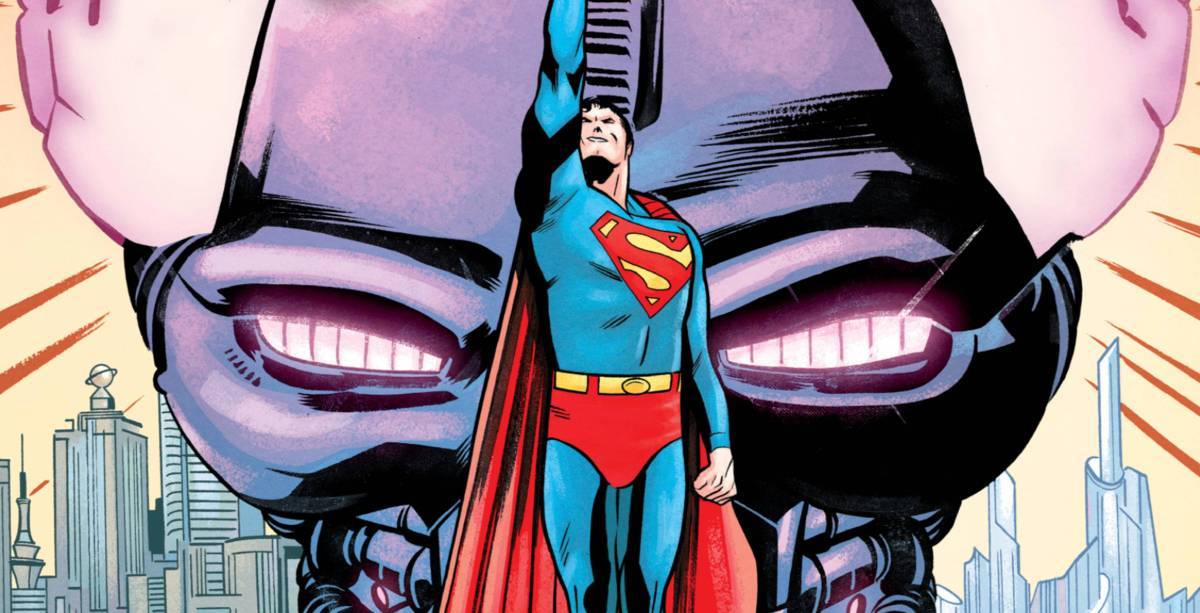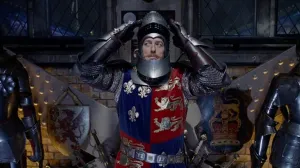Superman is my favorite superhero film ever produced. It was the first film to sincerely embrace the genre elements rather than toying with them through the lens of camp. Director Richard Donner famously posted the word “verisimilitude” where cast and crew could see it to remind everyone of their goal: To create a world in which Superman existed, not simply as a fantasy, but as a man we could see and, more importantly, believe was flying. The result was an iconic moment of American myth making that continues to inspire and influence film and media today. Just put John Williams’ “Main Title March” on and you can feel the power it still holds.
Videos by ComicBook.com
I heard that song when reading a Wilfredo Torres‘ panel in Superman ’78 #1 as Clark Kent peels away his shirt to reveal the red, blue, and yellow emblem beneath and, in that moment, knew this comic not only appreciated, but understood its inspiration. The results are electrifying.

Superman ’78 #1 approaches its story with a filmic approach refamiliarizing the audience to characters and the essential mythos before introducing a new threat to be addressed in the story ahead. It’s easy to imagine how writer Robert Venditti‘s comics script could be reimagined as one for film. However, Venditti is a consummate comics writer and while his story might be adaptable using familiar tropes and pacing as film, it distills its actions and story in moments that are designed for the comics page. In this case, that involves a flashback to the death of Krypton, Clark and Lois catching up on their way to work, and, of course, the arrival of Brainiac. Each moment offers a clear thread of pathos, humor, or excitement to pull readers further into the developing plot.
Regardless of a reader’s familiarity with Donner’s original film, this approach creates a space for the uninitiated to enter this sequel unencumbered. Torres’ approach to the cast and setting of Superman guarantee its accessibility. It’s easy to perceive the influence of actors, including Christopher Reeve, Margot Kidder, Marlon Brando, and Jackie Cooper, in these pages, but Torres uses a cartoonist’s light touch to take what is essential and develop characters on the page. He avoids the ugly pitfalls found in so many modern Star Wars comics wherein Carrie Fischer and Harrison Ford’s faces seem painfully traced. Rather than focusing on an excess of lines, Torres distills Reeve’s kind smile and Kidder’s hurried posture with minimal lines that don’t require readers to possess a separate reference point.
That’s verisimilitude—the sense that what we are seeing is real—and the effect of Superman’s smile in these pages is absolutely real.
Torres’ pages bring an easy comfort when catching up with Clark and Lois on the street, but they deftly shift into action when Brainiac arrives in Metropolis. Singular panels capture the humor found in many of Donner’s thrilling sequences (including an excellent gag with mustard). He can also deliver a punch with the best of them – maintaining Reeve’s realistic proportions, but still ensuring a fist thrust forward when flying or smashing Brainiac’s dome contains a clear sense of power. Bellaire’s flat colors accentuate these sequences by ensuring clarity in each moment, offering an almost breathless reading experience across the final half-dozen pages.
Superman’s initial showdown with Brainiac reads like the action sequence that typically present the opening credits in a film – the conflict has arrived and the audience is reminded of what they are here to see. It showcases what new things can be expected as well with energy blasts and Superman smashing through walls in a fashion difficult to duplicate without the use of CGI. There is a promise in those final few pages that this story can be bigger without concern for a studio’s budgetary constraints. However, it’s much earlier that the real promise is made when Superman’s chest is shown for the first time. It is in this moment that Superman ’78 recaptures the tone and spirit of Superman and makes the same promise Donner, Reeve, and others fulfilled decades ago: They make readers believe a man can fly.
I can’t wait to see it again.
Published by DC Comics
On August 24, 2021
Written by Robert Venditti
Art by Wilfredo Torres
Colors by Jordie Bellaire
Letters by Dave Lanphear
Cover by Wilfredo Torres and Jordie Bellaire








